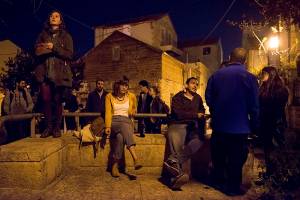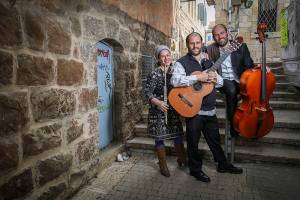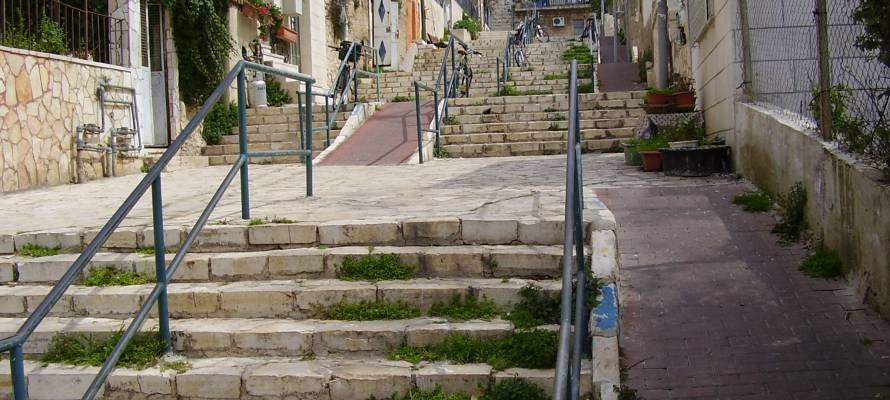In Nachlaot, you’ll get a sense of what Jerusalem was like in the late 1800s as well as a flavor of what is new and developing.

A street concert in Nachlaot. (Danielle Shitrit/Flash90)
When walking through the streets, or I should say alleyways, of the Nachlaot neighborhood in Jerusalem, it is very easy to get lost. You get the feeling that you have stepped back in time and that there is a great story associated with this area. Well, there is! So let’s learn a little bit about Nachlaot, though we will have to leave most of its stories to be discovered some other time.
As mentioned in previous articles, until 1861 the city of Jerusalem only included what was located within the Old City walls. In 1861, the very first Jewish neighborhood, Mishkenot Sha’ananim, was built outside the walls. After the first neighborhood was built, the flood gates were opened and thus began the construction of many new neighborhoods in Jerusalem. These areas are referred to as the new city of Jerusalem or Western Jerusalem as the neighborhoods are west of the Old City.
Nachlaot is actually made up of a cluster of little neighborhoods of which the first was established in 1875. The first neighborhood is called Mishkenot Yisrael (Dwellings of Israel) with its name being derived from the Biblical verse that says, “How goodly are thy tents, O Jacob/Thy dwellings, O Israel.” (Numbers 24:5) Another section of Nachlaot was founded in 1882 by Moses Montefiore. You may remember him as the one who was responsible for building the first neighborhood outside the walls of Jerusalem. The area in Nachlaot that he founded in 1882 was called Mazkeret Moshe, named for himself. This area was populated by Ashkenazi Jews and alongside it was another neighborhood called Ohel Moshe which was populated by Sephardic Jews. Nachlaot continued to grow and new neighborhoods kept popping up as late as the 1920s.
Because of its varied and dense population, Nachlaot once boasted the highest concentration of synagogues per capita than anywhere in the world. There were some 300 synagogues in just a radius of a few blocks. Some of the synagogues were tiny, others larger. Today there about 100 or so that are operational.

Siblings Rita (C), Yonatan (R) and Aharon Razel, well-known Israeli musicians, in Nachlaot. (Hadas Parush/Flash90)
Many of the original houses and compounds from the late 1800’s are still standing. In recognition of the rich history of the various neighborhoods of Nachlaot, the Jerusalem municipality has affixed plaques with pictures and histories of some of the one-time residents of Nachlaot. As you stroll through the alleyways it is fascinating to read the slices of history.
Over the years, Nachlaot has had many notable residents. Rabbi Aryeh Levin, who was known as the prisoner’s rabbi for his work in the pre-State of Israel era with members of the Jewish underground who had been imprisoned by the British, was a local resident. He became also know as the Tzaddik (Righteous one) of Jerusalem for his compassion for all walks of life—including visits to the hospital and to the leper colony where no one else would visit. Former Israeli President Yitzhak Navon grew up there. The Banai family, a famous family of actors and singers also lived in Nachlaot.
As the long-time residents began to pass away or move out, Nachlaot began to change and gentrify. It developed a reputation as a haven for artists, musicians and young, religiously inspired American Jews. Some of the old homes have been replaced by modern, luxury dwellings as foreigners from Europe and English-speaking countries have moved in. Despite the changes, plenty of the old Nachlaot still remains with large pockets of fervently religious, Yiddish speaking Jews.
A visit to Nachlaot is highly recommended. You will get a sense of what Jerusalem was like in the late 1800s as well as a flavor of what is new and developing.
By: Moshe Rothchild, Licensed Tour Guide
